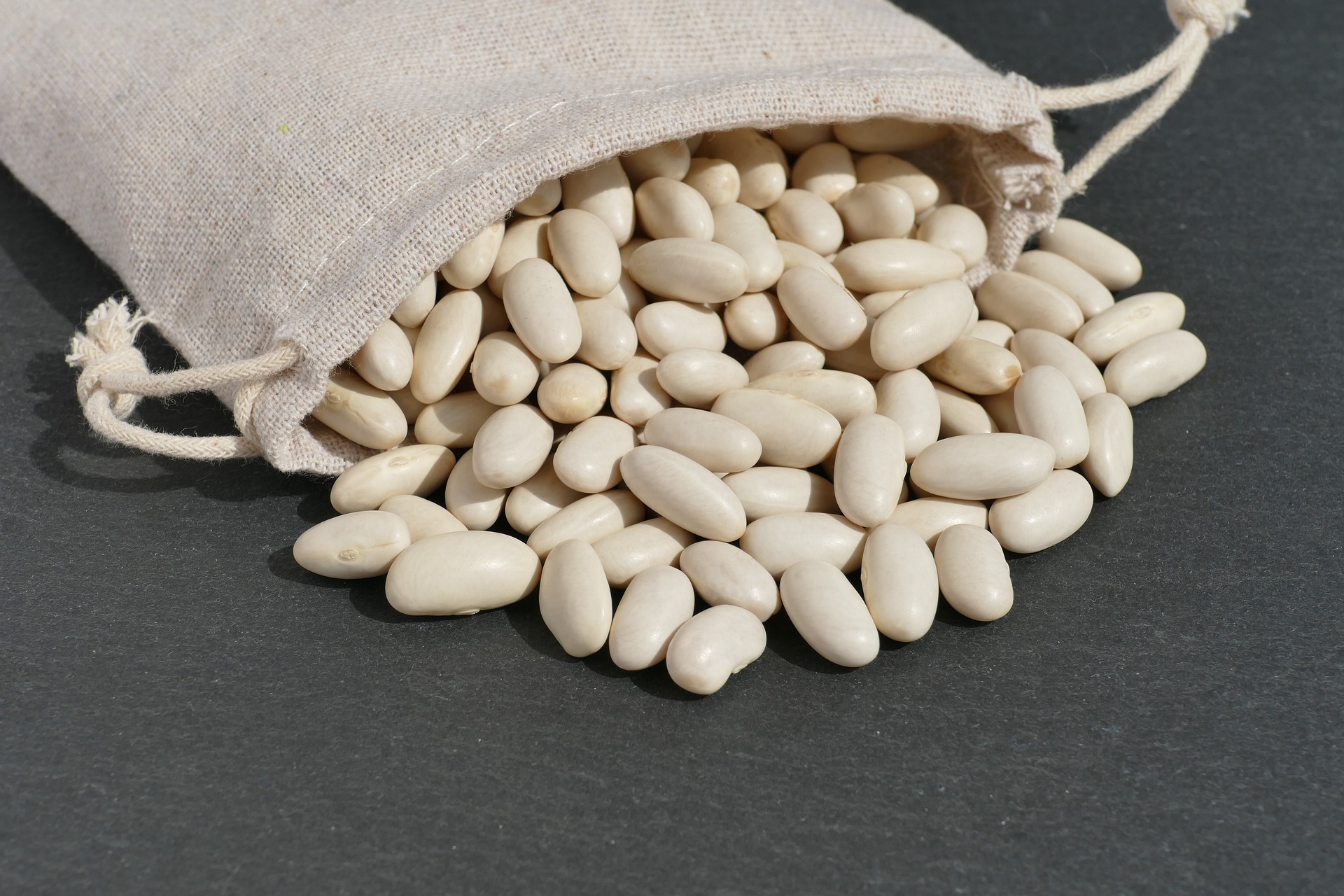Can it be milked? Nutrition to consider when choosing a plant-based milk
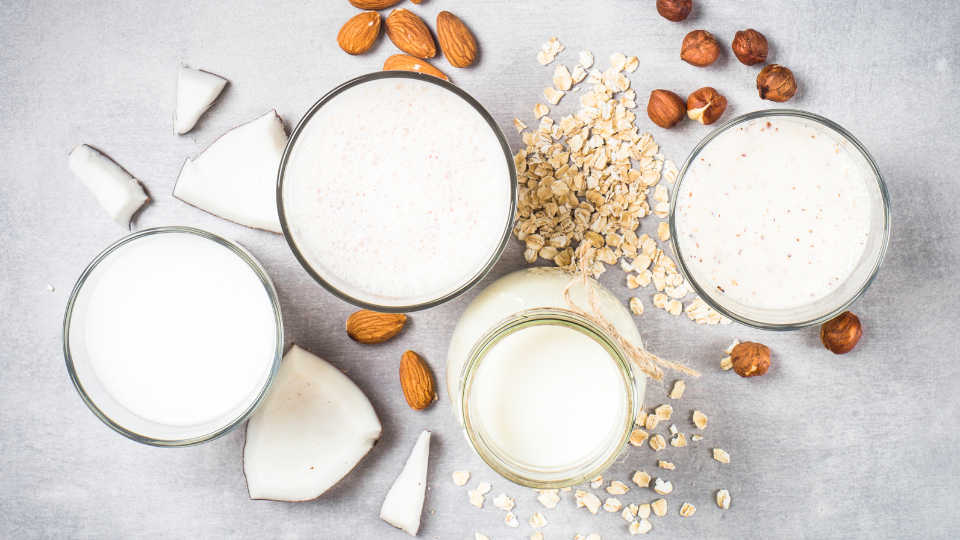
Introduction
Looking for a cool, refreshing beverage to top off your breakfast? Or to dip Oreos in before bed? Milk can be a go-to drink to fulfill these cravings and satisfy many nutrient-needs that humans have. Cows are the first source of milk that might pop into your mind, but milk from cows (or other mammals) doesn’t sit well with everyone. These days, there are many choices for those who want to replace cow’s milk in their diets. However, not all alternatives are created equally. Read on to learn how to make the best choice to enjoy all the benefits of milk in your diet!
Why not cow’s milk?
Cow’s milk is well known for its rich nutrient content, and as such is recommended by the FDA to be included in a healthy, balanced diet. It is part of the MyPlate graphics that are used to teach people about healthy eating patterns. Milk is included as a part of the MyPlate graphic because it is an important source of calcium, vitamin D, potassium, and protein in common dietary patterns in the
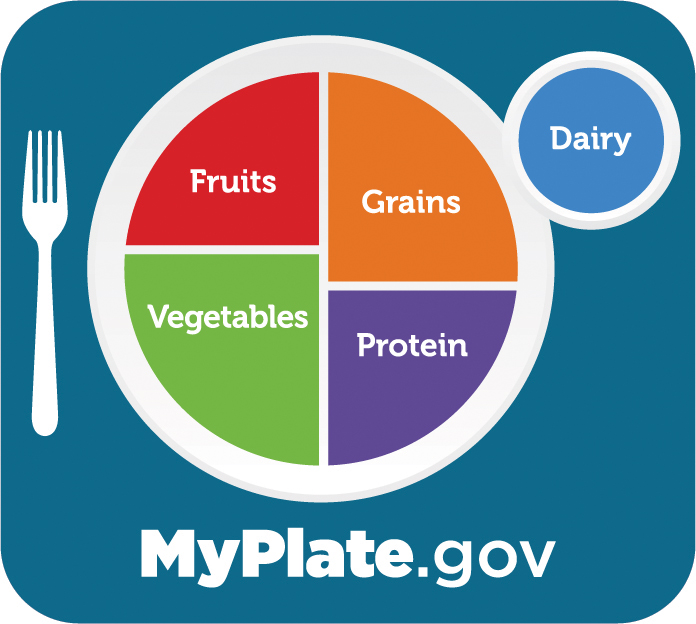
United States. Protein, calcium, vitamin D, and potassium are important for bone growth for children and for maintaining bone strength as we age. Potassium is thought to help maintain a healthy blood pressure and most people in the United States don’t get enough potassium. Protein provides structure for our body and is needed to build and repair our body tissues. Protein also makes up important molecules that help our body function, like enzymes to digest our food, antibodies to fight illness, and hormones to send messages.
However, some people are unable to consume cow’s milk because of dairy allergies or lactose intolerance. Other individuals may choose not to consume cow’s milk because they follow dietary patterns such as a plant-based or vegan diet. If you can’t or choose not to drink cow’s milk, you need to make sure that you get enough protein, calcium, potassium, and vitamin D from other food sources. One easy way to do so is to choose a cow’s milk alternative that provides similar amounts of these nutrients as found in cow’s milk.
Plant-based milk options
The following are popular cow’s milk replacements sources:
- Grains (oats, quinoa, rice)
- Legumes (pea, soy)
- Nuts (almond, coconut, cashew)
- Seeds (flax, hemp, sesame)
When these foods are “milked” they provide a product somewhat similar to cow’s milk. They can be sipped from a glass, added to recipes, and used to enrich nutrient content of meals just like cow’s milk.
When choosing a plant-based milk, it is important to think about the nutrition you will receive in addition to the taste, texture, and cooking properties. The primary nutrients to consider are calcium, potassium, protein, and vitamin D. You can see the average amounts of these nutrients in several plant-based milks in the charts below (in green) compared to 2% cow’s milk (in dark blue).
As you peruse the following charts, you will see that soy milk is the closest alternative to cow’s milk when it comes to protein content. Because fortified soy milk is most similar to cow’s milk, it is included as part of the dairy group in MyPlate. Almond milk has much lower potassium than cow’s milk, while soy and oat are similar. You can also see that these three plant-based milk types have the same amount or more vitamin D and calcium to cow’s milk. It is important to note that this is because the plant-based milks have been fortified with calcium. None of these sources of milk, not even cow’s milk, have natural sources of vitamin D. If you see vitamin D on the nutrition facts label of your milk choice, it is because it has been fortified with this nutrient.
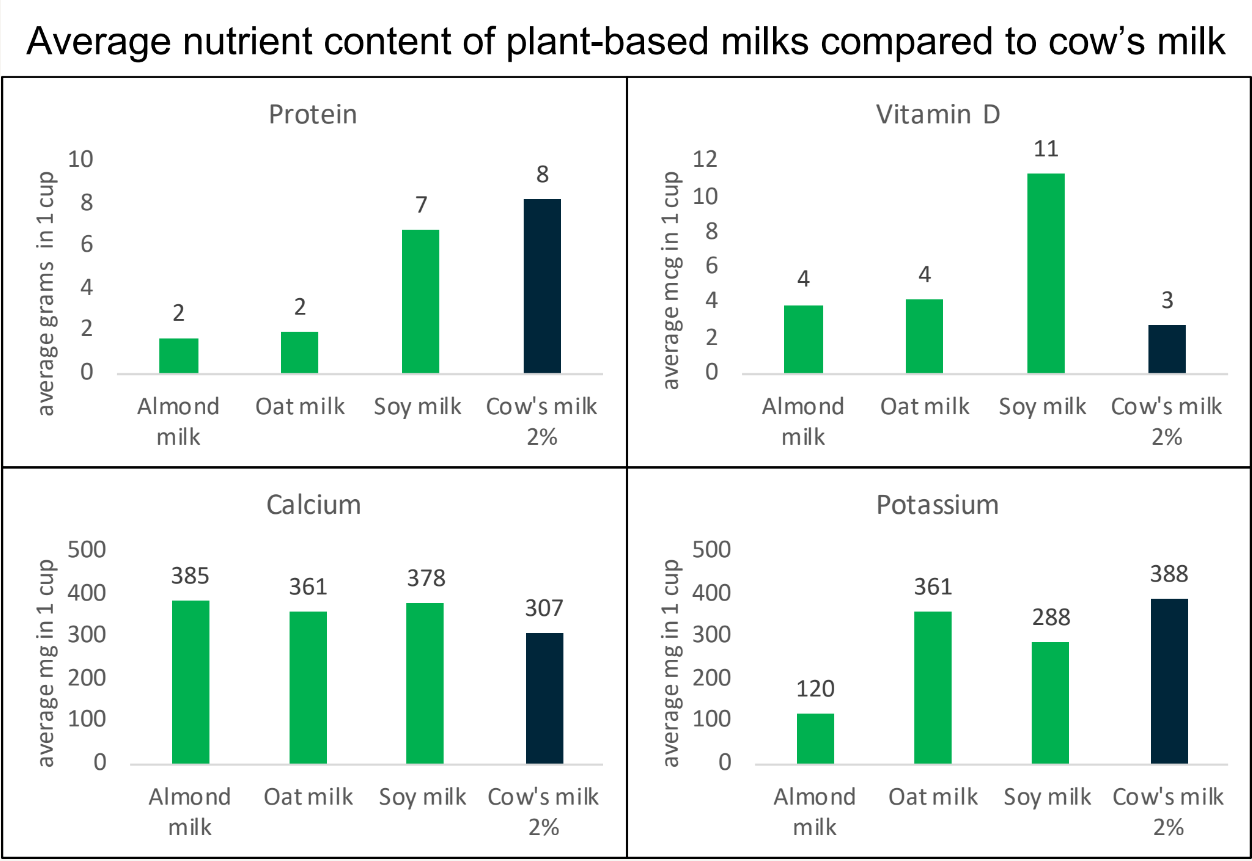
However, there are many different milk types that you can choose from when you are shopping at the grocery store. The nutrient content in those milk products may vary depending on the product you choose to buy. The nutrient content listed above in the chart is just an average of the amount of nutrients in the milk products found in stores. So, when you are at the store and trying to decide what milk to buy, you can use the nutrition facts label. The nutrition facts label will help you identify the amounts of these nutrients in the milks. See the figure below as an example of where to find the amount of protein, calcium, potassium, and vitamin D on nutrition facts labels.
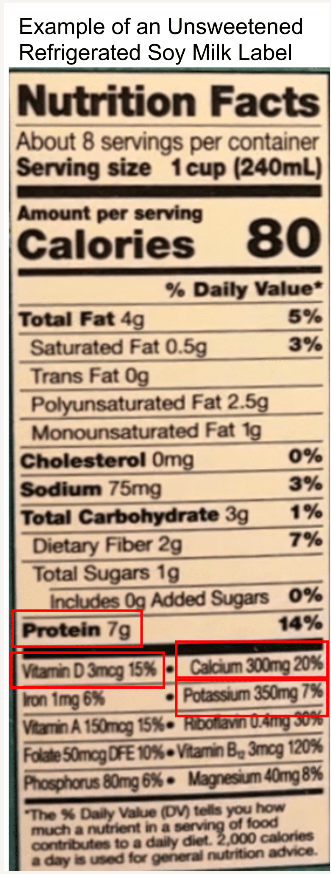
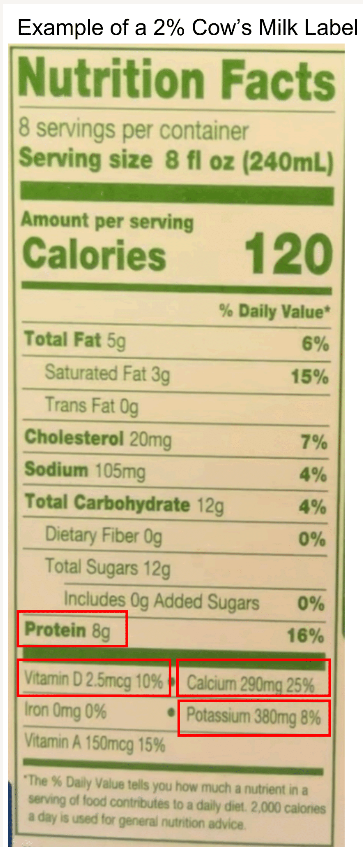
Other nutritional considerations
- Fat content: Different types of plant-based milks may contain different types and amounts of fats. For example, coconut-based milks may include higher amounts of saturated fats, and hemp-based milks may contain higher amounts of heart-healthy omega-3 unsaturated fatty acids.
- Carbohydrate content: Grain-based milks will contain more carbohydrates than plant-based milks from legumes, nuts, or seeds. For example, on average unsweetened oat milk contains 5 grams of carbohydrate, similar to 2% cow’s milk, while unsweetened almond or soy will contain much less. This difference in carbohydrates and calories may be a positive or negative factor in your decision depending on your nutritional needs.
- Added sugar: Note that some milks (both plant and animal based) contain added sugar.
- Home-made milks: Home-made plant-based milks will not contain any vitamin D or as much calcium, since these nutrients are fortified if present in store-bought plant-based milks.
Make your choice!
Now you can approach the dairy section of the grocery store with a little more confidence in your ability to fill your diet with nutrient-dense plant-based milks! Keep in mind the key nutrients (protein, calcium, potassium, and vitamin D) and use your new knowledge to fuel your choice as you seek to eat a balanced, healthy diet while keeping your body happy.
References
- Commissioner, O. of the. (2023). Milk and Plant-Based Milk Alternatives: Know the Nutrient Difference. FDA. https://www.fda.gov/consumers/consumer-updates/milk-and-plant-based-milk-alternatives-know-nutrient-difference
- Dairy | MyPlate. (n.d.). Retrieved July 19, 2023, from https://www.myplate.gov/eat-healthy/dairy
- FoodData Central. (n.d.). Retrieved July 19, 2023, from https://fdc.nal.usda.gov/fdc-app.html#/?query=milk
- Hoppe, C., Mølgaard, C., & Michaelsen, K. F. (2006). Cow’s Milk and Linear Growth in Industrialized and Developing Countries. Annual Review of Nutrition, 26(1), 131–173. https://doi.org/10.1146/annurev.nutr.26.010506.103757
- Office of Dietary Supplements—Calcium. (n.d.). Retrieved July 19, 2023, from https://ods.od.nih.gov/factsheets/Calcium-Consumer/
- Office of Dietary Supplements—Potassium. (n.d.). Retrieved July 19, 2023, from https://ods.od.nih.gov/factsheets/Potassium-Consumer/
- Office of Dietary Supplements—Vitamin D. (n.d.). Retrieved July 19, 2023, from https://ods.od.nih.gov/factsheets/VitaminD-Consumer/
- Protein Foods | MyPlate. (n.d.). Retrieved July 20, 2023, from https://www.myplate.gov/eat-healthy/protein-foods
Authors
Carrie Durward, PhD RD and Paytin Drollinger, Dietetics Student
*This publication is a part of a series created by Create Better Health and Utah State Extension Employees. It has been reviewed and updated to include current evidence-based research and recommendations.




